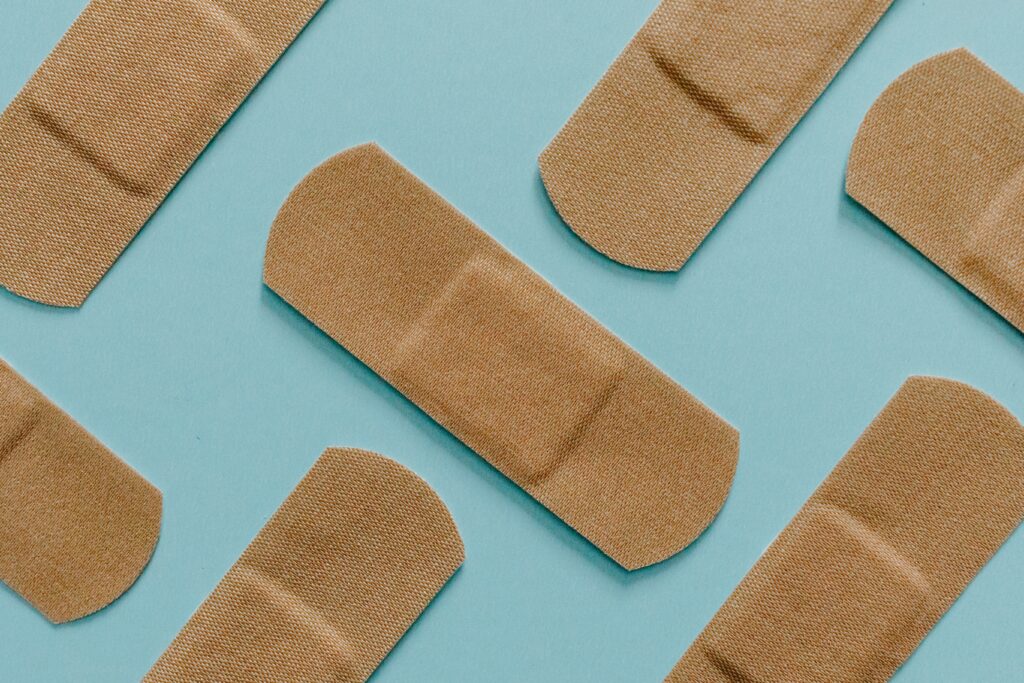Medical stick-to-skin products represent a significant opportunity for manufacturers because of how frequently they are used in today’s healthcare industry. Patient monitors, wound dressings, sensors, surgical tape, diagnostic tape and other wearable adhesive products have all become critical components of modern approaches to patient care. But in order for these products to be effective, manufacturers need to limit patient discomfort as much as possible, particularly for outpatient applications. Not only that, but the complexity of these items make them more akin to consumer electronics goods than other tape products. So, there’s a lot you need to think about when creating a product that will be successful in the market. Here’s a look at some of the top issues manufacturers need to consider when developing comfortable and effective medical stick-to-skin products.
The pillars of medical stick-to-skin products
When developing medical stick-to-skin products, there are three main concepts every manufacturer needs to keep in mind above all others:
Autonomy – In an in-patient setting, medical professionals can assist with applying and removing stick-to-skin medical tape. But for outpatient care, patients need to be able to manipulate devices themselves, sometimes with one hand. So, product developers should use adhesives that won’t be too painful or difficult to remove while also considering how the liner system and overall design of the product impacts a patient’s autonomy.
Discretion – There is some expectation in an in-patient setting that medical devices may be somewhat intrusive or would otherwise be considered unsightly in other circumstances. In other words, medical devices aren’t expected to be especially discreet. But for outpatient applications, it’s another story. Product developers need to design products that can be worn discreetly while still achieving intended performance goals.
Mobility – Regardless of where the patient is, stick-to-skin medical devices need to be designed in such a way that patients can practice normal movements without damaging the device or hindering its effectiveness. Product developers need to consider activities like showering, exercising, sleeping and other natural, daily movements when designing devices and selecting materials.
By developing products with these principles in mind, medical device manufacturers can create comfortable products that work for real-world applications and achieve the desired medical outcome.
Other considerations for medical tape products
Moisture management
Moisture management is important for any stick-to-skin product, but particularly for medical devices. Where wounds and other medical conditions create high moisture environments, keeping the skin as dry as possible can be key to the healing process, protecting skin from becoming damaged and having a direct impact on patient comfort. Therefore, moisture management should be a main consideration for any medical product developer.
Sweat, blood, natural oils, medicated ointments, lotions and other substances create a challenge for medical tape products because they can impact adhesive effectiveness. The key to overcoming that challenge is to select the right adhesive materials for your particular application. In short, there are two ways that adhesives manage moisture: vapor transmission and fluid absorption. Each method has distinct advantages and disadvantages, so selecting the appropriate approach will depend on the specific function of your device. An experienced engineering professional can help you select the right medical adhesives materials for each layer of your product to achieve the desired outcome.
Skin as a surface
Part of what makes medical stick-to-skin products so challenging to develop is that skin is an incredibly dynamic surface. Cells are constantly regenerating, the body exudes fluids, the age of skin impacts its properties and the entire surface is elastic. Accounting for all of these factors is no easy feat. So, partnering with a converter that has experience in the medical industry can help you go from concept to commercial production by offering guidance and support throughout the product development cycle.
Optical clarity for site checks
If treatment providers need to be able to visually inspect the application site without removing the stick-to-skin product, you will need to choose optically clear materials, including your adhesives. This type of product need should be identified early in the development cycle so you can streamline materials selection and bring your product to market faster.
Whether you’re developing a new type of bandage or a truly revolutionary product that will forever change the practice of medical care, patient comfort always needs to be a top consideration. That starts with selecting the right materials and making the right design decisions. By staying focused on both patient and product needs, you can develop great medical products that help improve the lives and health outcomes of your users.
Have an idea for a stick-to-skin medical device? Contact The Tape Lab and our experienced engineers can help enhance your process from concepting to commercial production.
